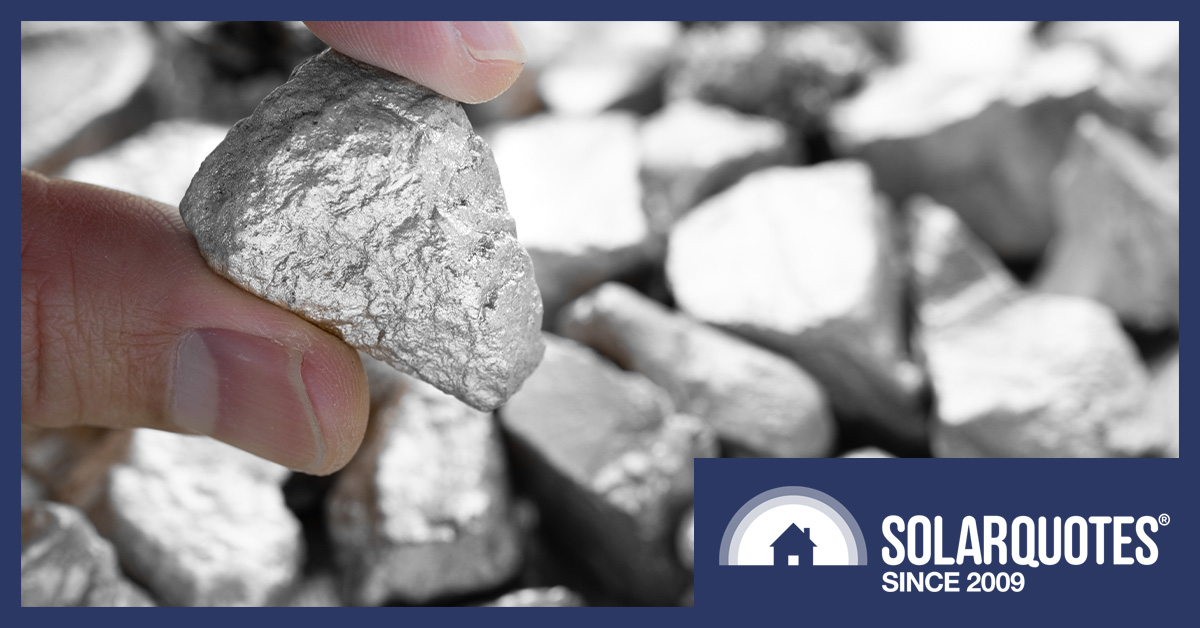
Powerful permanent magnets made from Rare Earth Elements (REEs) give us cheaper, lighter and more efficient generators and motors for wind turbines and electric cars.
Australia is the world’s 4th largest producer with 8% of REE production. But China is the rare earth element elephant, with 60% of the world’s supply. Their share of production used to be up around 95%, but after trying to hike the price in 2009 other countries — including Australia — started mining for REE.
Because China’s attempt to raise prices failed, you might think people would feel relaxed about how secure the supply is, but this isn’t the case1. Spurred by rising prices, governments and companies are continuing to work on diversifying REE production. To this end, last month Prime Minister Scott Morrison announced Australian taxpayers will contribute $30 million to Arafura Resources to build a rare earth elements separation facility near Aileron in the Northern territory. This is an early step in a plan to develop REE mining and refining capability of around 200,000 tonnes per year at a cost of around $1.4 billion2.
If you’re one of the rare but down to earth types who want to learn more about rare earth elements, keep reading and I’ll cover…
- What rare earth elements are.
- Why they’re important for the transition to renewable energy.
- How much money the Coalition promised to give mining companies last month.
Rare and Earths and Elements? 2 Out Of 3 Ain’t Bad
Voltaire, famously mocked the Holy Roman Empire for being neither holy, nor Roman, nor an empire3. But he could never make a similar jibe about rare earth elements because, while they aren’t rare, they can technically be called earths, they are definitely elements, and two out of three ain’t bad.
Rare? ❌
Rare earth elements are not rare. I may be sitting above a heap right now, as this map shows:
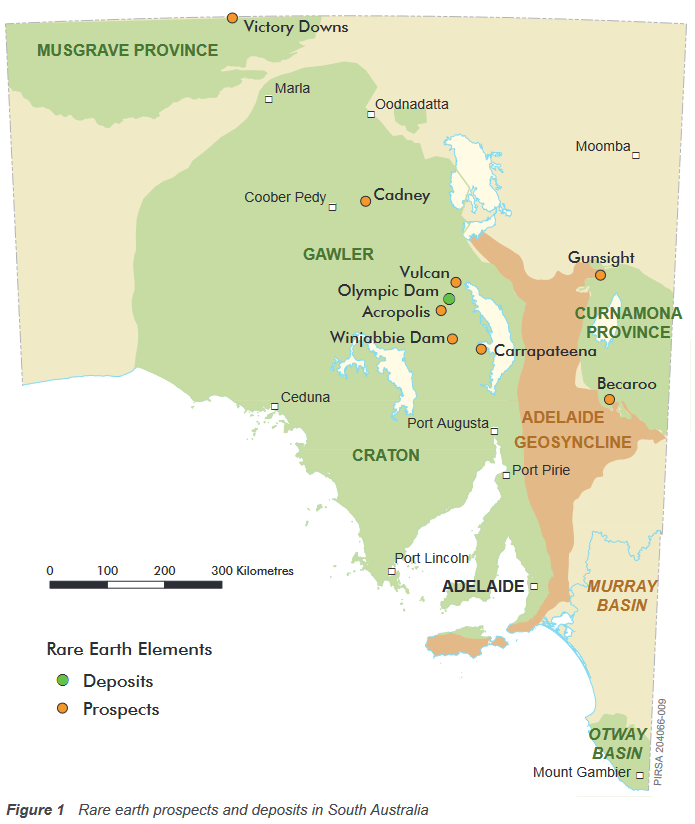
South Australia’s earths range from rare to downright freaky.
Because they’re not rare, there’s no conceivable scenario where we build enough permanent magnets to run out of REEs.
But the hard part is finding concentrations high enough to be worth mining. While South Australia has far more rare earth elements deposits than the rest of the country combined, so far no one has found any they consider worth mining, as the coloured triangles Geosciences Australia jammed into these circles show:
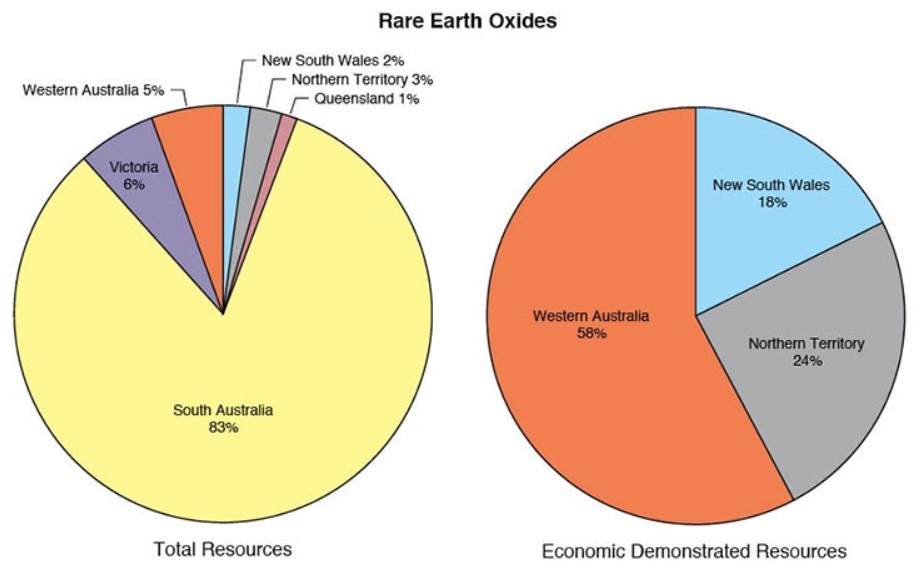
South Australia has a whole heap of rare earth elements, but they just aren’t considered economical to extract.
For the most part, REEs are socially awkward elements that don’t like forming concentrated deposits. So far, the only really rich one is in southern Jiangxi in China. Every other country that wants to mine rare earth elements has to make do with the least worst deposits available.
This means China is likely to always be the lowest-cost producer. This is why they were producing around 95% of world supply in 2009 before deciding to crank up the price. So, while Australia has plenty of okay deposits, like everywhere else in the world that isn’t southern Jiangxi, they’re not great.
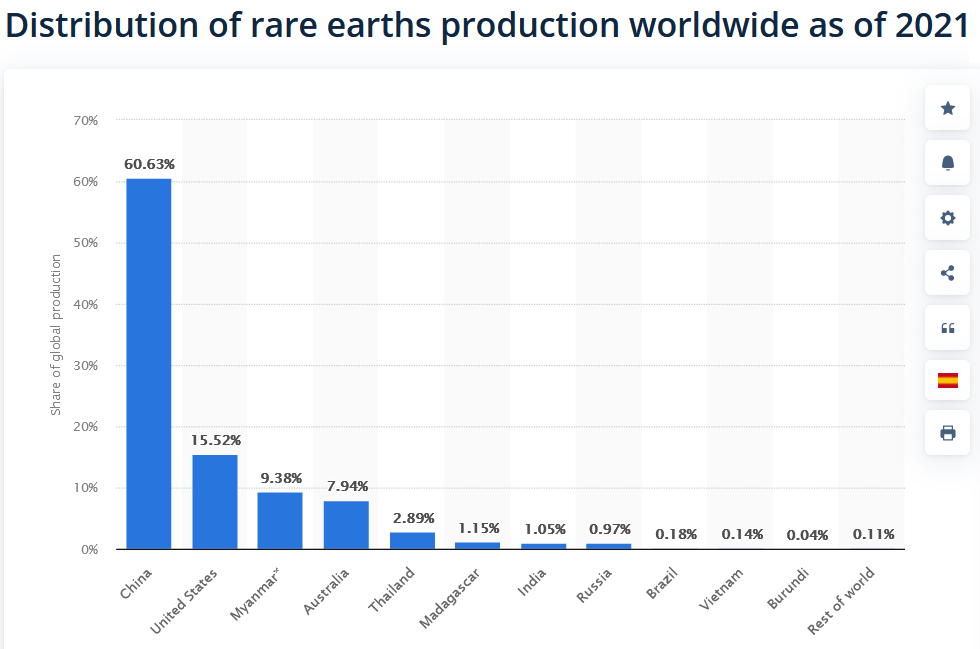
This graph is from Statista and shows REE production by nation. The International Energy Agency figures have Australia producing considerably more, but I consider these more accurate.
Earths? ?
Rare earth elements are metals. Normally, we don’t think of metals as earths or dirt, but chemists aren’t normal people. (They’re extraordinary people.) If you pick up a random handful of dry dirt then, depending on where you are, it can be over 10% metals such as calcium4, aluminium, magnesium, iron, sodium, and so on. So, according to chemists, metal compounds can be earths.
Elements? ✅
To prove rare earth elements are elements, I will show you the Periodic Table of Elements. But not the one you’re used to. I’m going to show you the real Periodic Table. The secret one your school teachers kept hidden from you.
Here it is:
Ew! Now I see it, I realize why they kept it hidden. That’s way too wide and far too difficult to read5. I think I’ll stick with the traditional periodic table, which sticks the long thin bit on the left under the table:
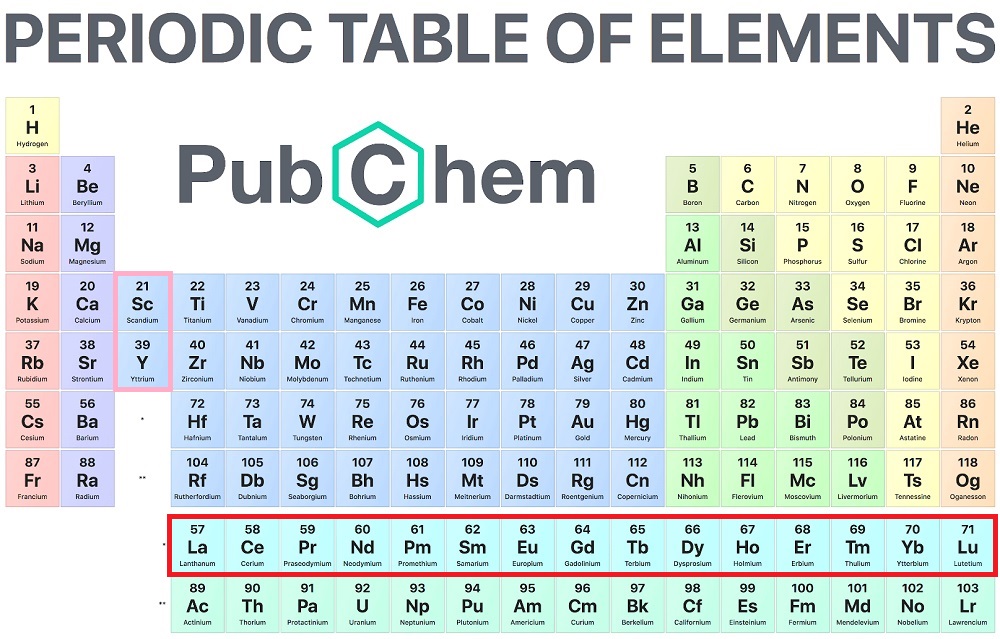
As you can probably tell, I got this Periodic table from PubChem. It’s like a more educational version of PUBG, except fluorine is OP because it kills everything — especially devs who try to nerf it.
In this easier to read Periodic Table6 I’ve outlined all 15 REEs in red. I’ve also outlined two elements in pink often included with rare earths because they’re chemically similar. Some people throw in even more elements, but that behaviour shouldn’t be encouraged.
If you’re wondering how to pronounce the names of these rare earth elements, this song explains it all. Just spend a few minutes memorizing it, and you’ll be fine:
The REEs I outlined in red are all lined up in a row because they’re all chemically boring in a similar way. They’re not very reactive and reluctant to form crystals. Their lack of reactivity is why good deposits are hard to find. Not much concentrates them. This is why rare earths are also called lanthanides, a Greek term meaning “to lie hidden”. If something doesn’t do anything, it’s hard to notice it’s there.
But their boring chemical similarity means all REEs will be found together in one deposit, although portions can vary. This means one mine could technically produce all the rare earth elements. In practice, only the ones considered economically worthwhile are refined.
REEs are metals, but they tend to be soft and brittle in their pure states, so you don’t have to worry about someone trying to stab you with a neodymium sword. Unless, of course, you have surgical steel inside your body. In this case, a powerful permanent magnet sword could be very dangerous.
REEs Make Better Magnets
REEs have a wide range of uses and, if you’re interested, they’re listed here. But permanent magnets are the most important application for getting off fossil fuels. The rare earth elements most often used for making magnets are:
- Neodymium — This is the main rare earth element used to make permanent magnets.
- Dysprosium — Far less of this is required but can replace around 5% of neodymium and improve durability.
- Praseodymium — While not required, this element can replace a small amount of the neodymium in magnets.
- Dysprosium — This can help improve a magnet’s ability to handle higher temperatures without losing strength and improve durability.
- Terbium — This is sometimes added to permanent magnets and has an effect similar to dysprosium.
- Samarian — Combined with cobalt, this makes for a powerful permanent magnet. But because they’re not as powerful as neodymium magnets, samarian-cobalt magnets now play second fiddle.
Neodymium magnets are incredibly strong, and many injuries — and even deaths — have been caused by people being caught between two of them. If you are a mystery writer, they are a really underutilized murder weapon7.
Wind Turbines & EVs Use Permanent Magnets
Magnets are required for both generators and electric motors. (They’re kind of the same thing, but I’m not going into that.) Two types of magnets can be used:
- Electromagnets: These have more weight, require more copper, and are more complex — but are cheaper upfront.
- Permanent magnets: These are lighter, simpler, and allow slightly higher efficiency. They also cost more.
When saving on weight is important, permanent magnets are usually used.
Wind Turbines
On land, most wind turbines use electromagnets, but an increasing number are direct drive wind turbines with permanent magnets. This allows the generator to be lighter, which is very important because it sits on top of a long steel tube with giant blades attached to it. The lower the weight, the less material is required for foundations and the steel tower, reducing costs. They also have a small efficiency advantage, particularly at low wind speeds.
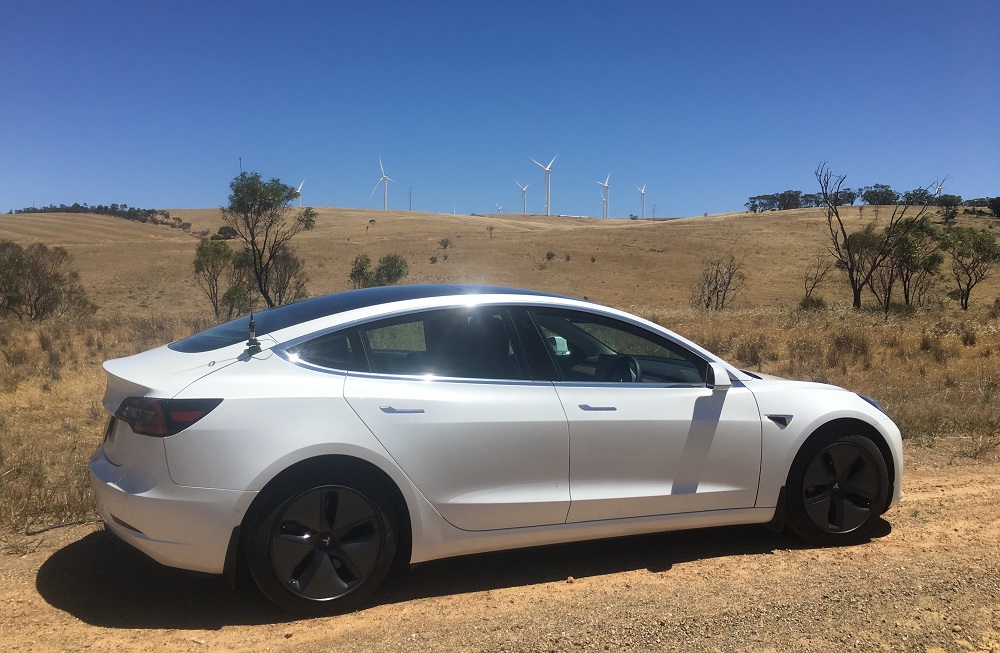
The Snowtown wind turbines in the background have neodymium magnets to convert motion into electrical energy. The Tesla Model 3 EV in the foreground has neodymium magnets in its motor to convert electrical energy into motion.
Because permanent magnets are simpler than electromagnets, they require less maintenance. This is why every new offshore wind turbine uses permanent magnets. It’s difficult to maintain wind turbines 30 km out to sea, so there’s plenty of incentive to minimize the amount required.
While wind turbines don’t need permanent magnets and could get by without them, they are useful and help minimize costs and maximize efficiency.
Electric Vehicles
A lighter motor makes an EV slightly more energy efficient because it doesn’t have to haul as much weight. Also, because they’re lighter and energy doesn’t have to be spent charging electromagnets, the motor can be a few percent more efficient.
Accept Some Substitutes
Improving EV efficiency by using permanent magnets is useful, but this will become less important as batteries become cheaper. An EV manufacturer could use a less efficient but cheaper motor without permanent magnets and make up for the range loss by adding additional low-cost batteries. Whether or not this substitution makes sense will depend on the relative cost of permanent magnets and the extra battery capacity. Because of the potential for disruption in supply and recent increases in REE prices, both EV and wind turbine producers are looking for ways to minimize REE use, and some suggest they may move away from using them.
I think REE permanent magnets offer too much of an advantage not to be used. This could change if prices rise, but I doubt China will try to force them up again. Their market share has plummeted enough, and they make too much money from selling lower-cost rare earth elements to risk killing the goose that lays the neodymium eggs.
The Chinese REE Trade Dispute
Thirteen years ago, China restricted exports of REEs to raise the price. They claimed they were doing this for environmental reasons but didn’t really fool anyone. At the time, China produced around 95% of the world’s supply, so they probably thought it would work. Instead, it caused a trade dispute that didn’t benefit anyone, and other countries started producing rare earth elements. This is how Australia became a producer. China’s share of production has now fallen to around 60%.
Around four years after the attempt to raise prices, the disruption was over. One major reason it didn’t work was illegal Chinese mining and the smuggling of REEs. The fact the price rise didn’t last long was a clear demonstration it can be challenging for a country to disrupt the supply of critical minerals beyond the short term, even if they control nearly all the world’s supply. But now, increased demand for wind energy and electric vehicles have pushed REE prices up, many other countries are increasing production outside of China.
Australia is one of these countries. Admittedly, we are in a good position to supply raw materials to the world’s population:
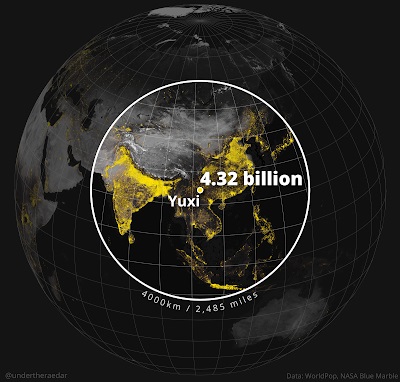
This map shows more than half the world’s population is perched over our left shoulder. Of course, shipping costs are normally low, so we shouldn’t get cocky.
Your Taxes Go To Mining Corporations
To increase the supply of REEs, the Coalition is giving your money to a mining company to help them out. Here’s what was announced last month in their “Supercharging Critical Minerals Manufacturing” media release:
This was a small part of a giveaway to mining companies totalling $243 million.
One of the touted benefits of this package is to help secure supply chains, but I find it hard to believe our government believes in supply chain security, given they decided a good place for our oil reserves was in a country on the other side of the planet that’s at risk of an authoritarian takeover. I suspect the real reason for the handouts is they just like giving money to mining companies.
I can think of better uses for the funds. For example, I own a sub-optimal number of French châteaux. But if our government is going to hand over our money to mining companies no matter what, it should go to those producing minerals required for renewable technologies rather than propping up coal and gas extraction.
Footnotes
- Paranoia strikes deep in the heartland, I think it’s all overdone. Exaggerating this, exaggerating that… They don’t have no fun. ↩
- This will produce low-level nuclear waste because mildly radioactive stuff such as thorium gets concentrated in the tailings. Still, it’s not very dangerous when disposed of correctly. It’s hard to believe Australians would get their knickers in a twist over a little thorium, given they used to invite Britain to detonate atomic bombs here just to see what would happen. ↩
- Emperor was an elected position, which isn’t how it’s usually done. ↩
- Yes, calcium is a metal. If it was in its pure form, your bones would be shiny like a Terminator. Also, you’d be dead. ↩
- People tell me I should get reading glasses, but I think they’re a ripoff. A fast-talking optometrist once convinced my grandfather to get reading glasses and after he put them on, he still didn’t know how to read. ↩
- If you are interested in chemistry and want to live long enough to become an old Chemist, always remember to read the Periodic Table in the following way: Hydrogen, Helium, Lithium, Nope, Boron, Carbon, Nitrogen, Oxygen, Hell no, Neon, Kazakhstanian, Calcium… ↩
- Putin could kill subordinates who have failed him for the final time by giving them a hat with a permanent magnet in the band and then letting a neodymium ball roll down that long wooden table of his. ↩

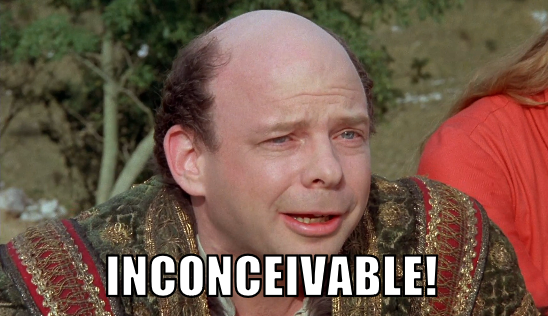


 RSS - Posts
RSS - Posts



Thanks Ronald for reminding me that:
A. Tom Lehrer wrote that song
B. To check if he is still alive
Thankfully, he is still with us. What a song! It is right up there with The Vatican Rag.
Great summary but a little bit more of the history would make it even better…
Perhaps add a paragraph or two about what China (aka the CCP) did in the 1990s and early 2000s to the rare earth market.
Through that period they undercut EVERY non-Chinese refiner of rare earth metals in order to drive the rest of the world out of the business & create a strategic stranglehold for political power.
Such as when they stopped all exports to Taiwan in the 2000s – which pretty much threatened to stop semiconductor production within weeks.
China got concessions & slowlt re-started supply.
Currently Taiwan is responsible for the production of 95+% of the latest 3 generations of semiconductors as Intel’s avoidance of using extreme UV for sub 12nm semis failed and resulted in TSMC becoming virtually the only supplier of cutting edge processors.
If, China decided to invade Taiwan then within three weeks (max) the internet would cease to operate due to the lack of semiconductor supplies from both China (lower spec but massive volume of tens of millions/week) and Taiwan (high spec & millions per week).
Every day in data centres around the world tens of millions of HDDs fail & are replaced. Major risk (never mentioned) in moving business data solely to the ‘cloud’.
One drawback to just in time inventory management as Covid-19 clearly demonstrated the issue of China being the world’s factory.
So, would the Western response be akin to the response to Russia’s invasion & annexation of the Crimea as well as part of Eastern Ukraine?
Western Europe & Turkey spoke strongly against Russia whilst increasing financial support of Putin by massivelt increasing their purchases of Russian oil & gas in the following months & years.
Also a most interesting article, thanks. When Japan apprehended Chinese fishing boats in “its” waters, China stopped rare earth exports to Japan, then Japan claimed huge off-shore deposits or rare earths.
Dysprosium (Dy) reduces the loss of magnetism with heat and was mined at Browns Range in WA, but now the mine may have been put into mothballs. China was also financing that mine, perhaps here is a chance of the gov. to step in also. Lynas is finding working the separations in Malaysia to be too troublesome, so they are shifting their ops partially to WA, great.
While Biden’s America is increasingly authoritarian albeit divided, is an authoritarian takeover i.e. abolition of democracy actually likely to occur? I don’t see Democrats as being prepared to pull the trigger in response to the looming red tsunami that is this year’s election. (For those unfamiliar with US politics Red means Republican, Blue means Democrat).
Regarding the $243 million giveaway, isn’t the majority of that funding actually going to non-mining companies?
+$119.6 million to Pure Battery Technologies
+$45 million to Alpha HPA
=$164.6 million (or 67.7% of the funding)
Yes all the funding is minerals based, but isn’t it better to ship high value products out of Australia than raw materials like some sort of 3rd world nation?
No argument George, except that if it’s truly a legit capitalist, money making exercise, why does the taxpayer need to fund it? There’s plenty of capital just crying out for “green” projects to invest in.
Especially from a party that is supposed to be non interventionist in the market.
Perhaps they may (have?) choose to make a political donation to their favourite political party, in the normal range of 1/4000th the grant received, or so.
Have a look in 2023 when the 2021/22 figures are released, or perhaps 2024 if it happened to be made post 1/7/22.
Interestingly, Tesla use neodynium permanent magnets only in their front motor, but not the back. Saving costs?
Apparently the front motor are used more on highways, as they generate power more efficiently.
Re: Point 2 in the footnotes – Iluka at its Eneabba sand mine has a large Thorium-filled tailing heap and if Elon Musk is to be believed, he is selling a Thorium Deuterium generator for US$30,000. Thorium-based reactors have always been in the news as a small solution to global warming.